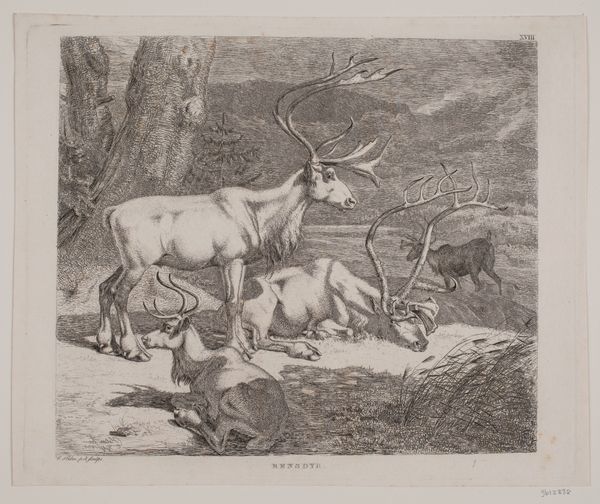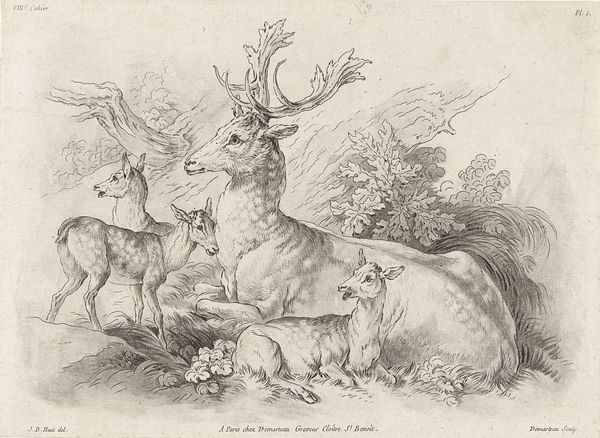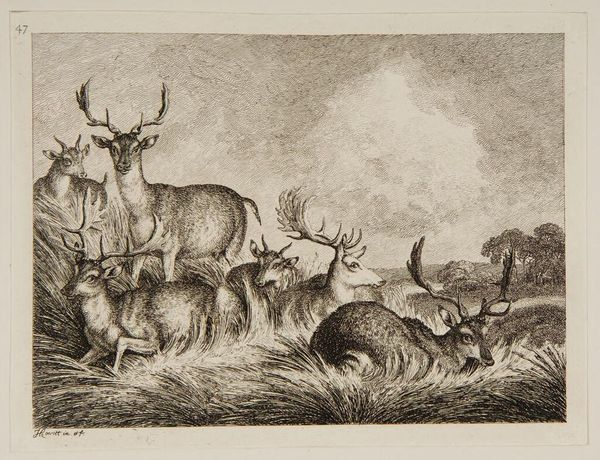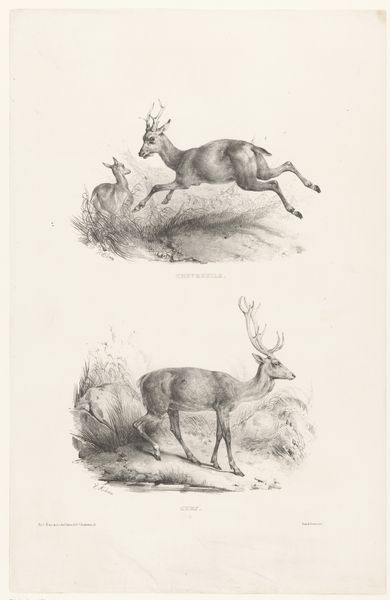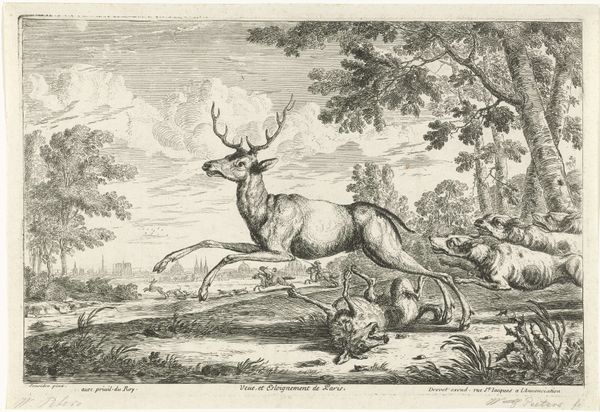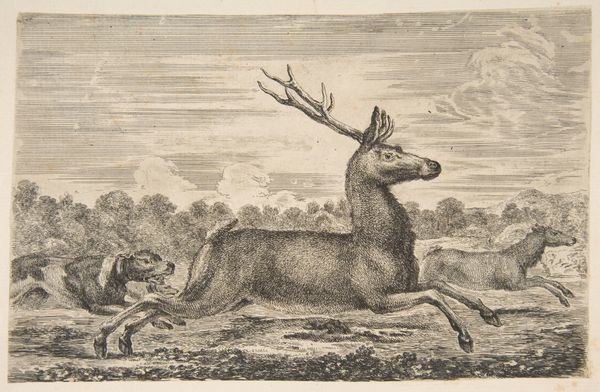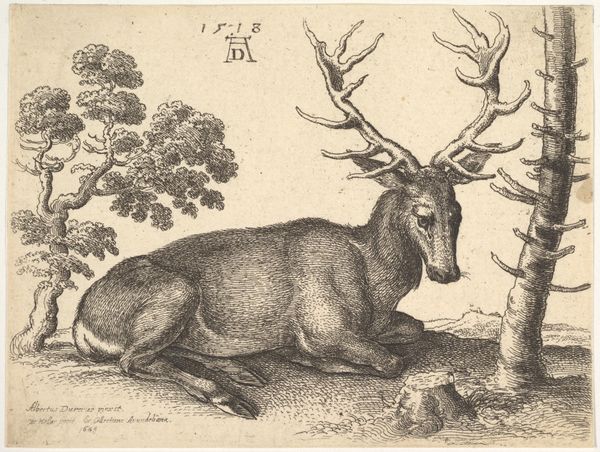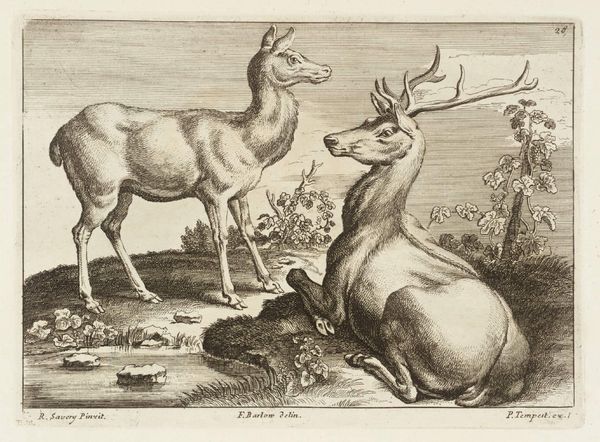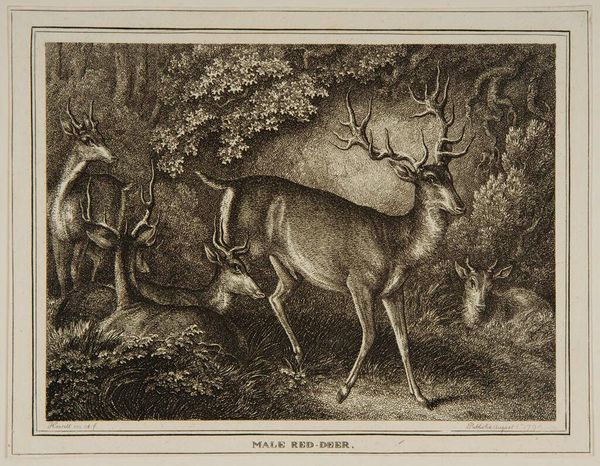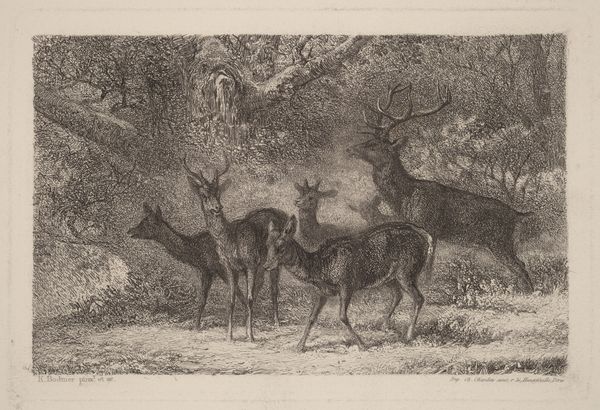
drawing, print, pencil, graphite
#
pencil drawn
#
drawing
# print
#
pencil sketch
#
landscape
#
figuration
#
pencil drawing
#
pencil
#
graphite
#
realism
Dimensions: height 342 mm, width 425 mm
Copyright: Rijks Museum: Open Domain
Curator: This is an intriguing print simply titled "Renne. / Raindeer. / Rennthier. / Renne. / rendier", created sometime between 1829 and 1880 by the firm Joseph Scholz. What strikes you about it? Editor: My first impression is that it has a rather haunting beauty, almost like an anatomical study blended with a melancholy landscape. The use of what seems like graphite creates this ethereal feel...you can almost feel the chill in the air of wherever these reindeer roam. Curator: Absolutely, the reindeer possess a symbolic weight far beyond mere naturalism. Historically, reindeer represented endurance and resourcefulness, essential for survival in harsh Northern climates. Seeing the resting reindeer, almost like a sacrifice, tells us of this delicate relationship between man, animal, and landscape. Editor: I’m particularly drawn to the technique here. It looks like a reproduction, perhaps a lithograph or early photomechanical print derived from a graphite drawing? Note the level of detail in rendering of the animals’ fur against the smoother tent in the background, plus the sharp lines and contrasting shades—highlights the starkness of the scene. The means of production, particularly the use of reproductive print technology suggests the intent to widely disseminate this image, catering to both scientific study and public curiosity. Curator: Exactly. These kinds of images were powerful tools for circulating ideas about natural history and geography. This period really solidified the role of animals as potent cultural symbols in art, literature, and even scientific discourse. It highlights humanity’s continuous attempt to grasp and make sense of its relation with the natural world. Editor: It’s interesting how the print’s multiple titles indicate an awareness of a broad, multilingual audience—the dawn of mass culture if you will. Was Scholz primarily interested in satisfying popular taste with depictions of faraway lands, or was there also an underlying intent on educating a wider populace about these creatures and their world? That question hangs over the print, doesn’t it? Curator: It does indeed. Examining works like this reveals the complex ways humans perceive and portray the natural world, weaving together fact, cultural understanding, and the sheer wonder of it all. Editor: Agreed. It really underscores the material and conceptual journey an image takes from an artist's hand, to mass production, to cultural artifact. Fascinating how seemingly simple artworks open these layers of thinking.
Comments
No comments
Be the first to comment and join the conversation on the ultimate creative platform.

